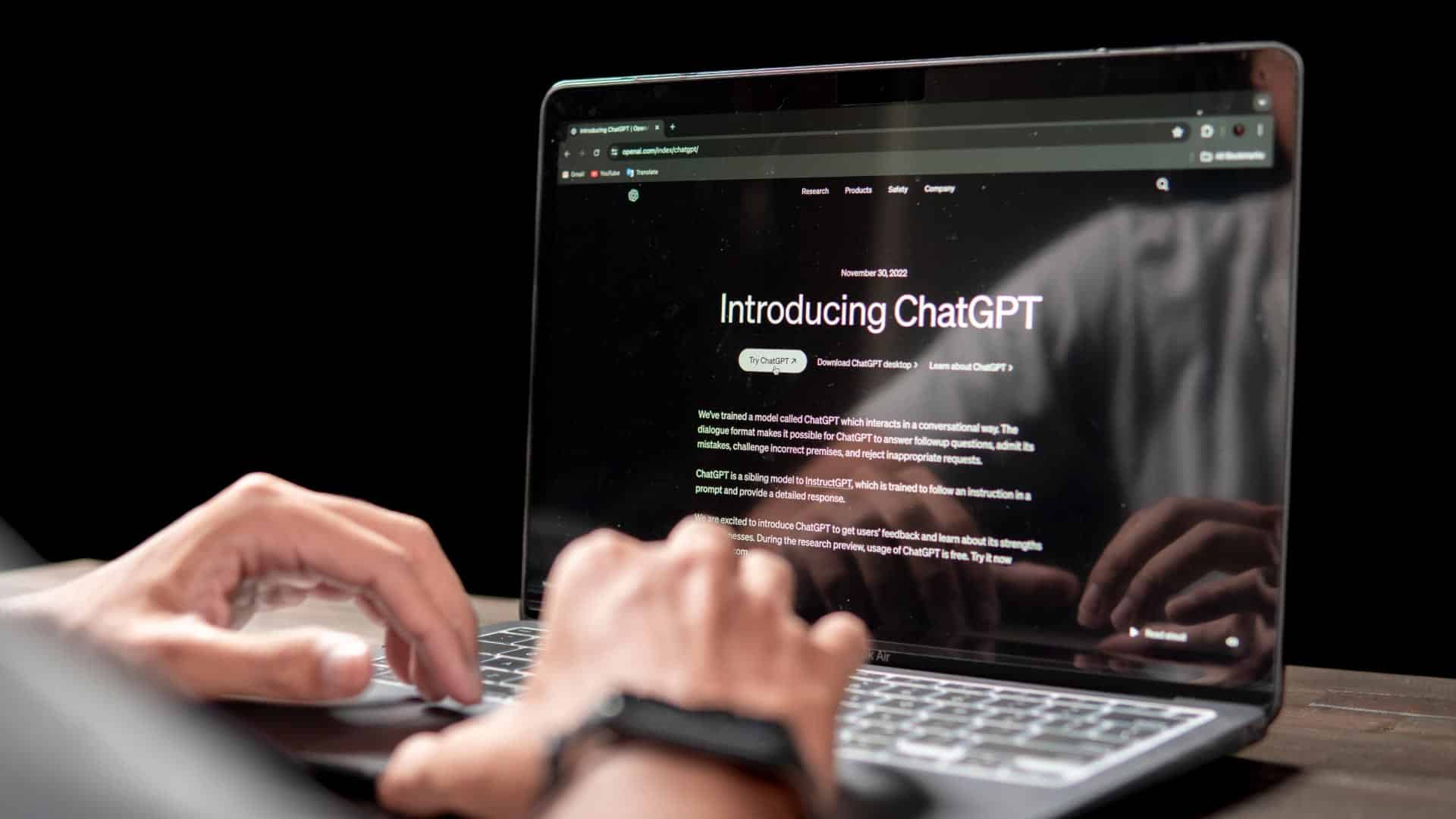ChatGPT, the language model developed by OpenAI, has quickly become a familiar tool for many marketers. By now, you and your team have likely either experimented with ChatGPT or another popular large language model (LLM) like Google’s Gemini, Bing AI, Anthropic, Jasper AI or Microsoft CoPilot (which helped me draft this blog post).
LLMs like ChatGPT are transforming the way teams approach content creation, customer interaction, and data analysis. This technology has even seeped into the marketing creative process.
In this blog series, we’re looking at the synergy between AI and human creativity, focusing on how tools like ChatGPT can fuel and enhance creative processes rather than replace them. It’s a series made possible by Mod Op’s AI Playground — an initiative designed to fast-track innovation by allowing team members to experiment with new AI tools quickly and responsibly. If someone finds a promising app, they can submit it. If the application passes our rigorous AI risk and compliance framework, the IT team will assist in setting up a 90-day evaluation period, during which users provide insights on the app’s value. This process aims to enhance skills, extract value faster, and identify any limitations of the tools.
As you might imagine, ChatGPT, which is used across teams and marketing disciplines at Mod Op, was one of the first apps to hit our AI Playground.
16 Applications of ChatGPT in Marketing
With over 400 specialists and marketing services ranging from brand positioning and advertising to data analysis and domestication, our team touches nearly every facet of marketing. We’re perfectly positioned to test how this multifaceted tool can be applied to all different types of marketing services and specializations.
Just getting started with AI? Here are 16 easy ways that marketers can use ChatGPT:
- Email subject line and preheader
Use ChatGPT to craft compelling email subject lines and preheaders that capture attention and drive open rates.
- Ideation and email copy rough drafts
Use ChatGPT to brainstorm fresh ideas and draft preliminary email copies that capture your target audience’s attention.
- Social ad/post copy ideation and rough drafts
Leverage ChatGPT to brainstorm and create initial drafts for social media ads and posts, ensuring your copy is engaging and tailored to your audience.
- Meta description drafts
Use ChatGPT to analyze your content and generate concise, keyword-rich meta descriptions, but be mindful of SEO best practices. As Mod Op’s SEO Director Garreth Cunningham cautions, “I wouldn’t recommend using ChatGPT to do meta descriptions in a vacuum. Things I would keep in mind when using GPT, are things like the keyword strategy/data, cannibalization and any new/updated information architecture requirements.”
- Drafting image alt text
Drafting image alt text is crucial for both accessibility and SEO, as it ensures that content is accessible to all users, including those with visual impairments, and helps search engines understand the context of images. ChatGPT can be used to craft clear, descriptive, and concise alt text that accurately represents the image content, enhancing the overall user experience and improving search engine rankings.
- Concept ideation for digital campaigns
ChatGPT can be used to brainstorm and develop concepts for digital campaigns. You can provide ChatGPT with information about your target audience, campaign goals, and brand messaging. The model can then generate a variety of campaign ideas, including potential themes, slogans, and visual concepts
- Research summarizing
With human oversight, ChatGPT can analyze lengthy research reports, articles, and market data to provide concise summaries of key findings and insights.
- Extracting the best quotes from audio/video transcripts
Consider using ChatGPT parse audio or video transcripts to extract the best quotes for use in written marketing materials. “I use ChatGPT to extract the best quotes from transcripts of Mod Op’s Leader Generation podcast,” shares Mod Op Director of Copywriting Cheryl Boehm, “It saves me time from reading through transcripts myself or re-listening to 30 minutes of audio.”
- Writing YouTube Title/Description from a transcript
Just as ChatGPT can extract quotes from audio or video transcripts, it can also be used to develop optimized titles and written descriptions. By sharing your keyword research with the LLM, you can further enhance its ability to generate titles and descriptions that are tailored to YouTube’s algorithm.
- Code development and optimization
As Mod Op VP of Digital Experience and Technology Fabio Fiss shares, our team “frequently uses ChatGPT for coding tasks, including writing scripts, optimizing code snippets, and rewriting statements to make them more efficient. It’s often utilized for generating quick solutions or guidelines, such as PHP database calls or JavaScript functions.”
- Debugging and troubleshooting
“ChatGPT is valuable for troubleshooting, especially when developers need to understand errors or generate explanations for unexpected behaviors.” shared Fabio. “It serves as a first line of inquiry to identify potential causes or offer starting points for debugging.” This is also a top use case for those executing paid channel marketing. “ChatGPT has been a helpful resource for our team in navigating platforms like GA4 and Google Tag Manager,” says Hannah Woodham, VP Paid Channel Marketing at Mod Op. “Whether it’s debugging tracking issues or troubleshooting complex configurations, it serves as a responsive and reliable resource, helping us resolve challenges quickly and stay focused on driving results for our clients.” - Data generation and testing
“ChatGPT simplifies the creation of test data by generating dummy datasets and mock responses” shared Fabio, “This feature helps streamline the testing process, allowing the team to quickly simulate various scenarios.” He goes on to share that “Developers also find it useful for generating structured data in different formats (e.g., JSON, XML), which can be used in unit tests or integration tests. This capability significantly reduces the time spent manually creating test cases.”
- Guides and documentation
Marketers, including those working in areas like digital experience (DX) or product marketing, can leverage ChatGPT to create comprehensive guides and documentation, streamlining the process and enhancing user support.
- Coding and search ideation
ChatGPT can be a valuable resource for both coding and search ideation. It can generate code snippets and explain code concepts. Additionally, ChatGPT can assist with brainstorming search topics, finding relevant keywords, and refining search queries. “Ideation is an application of ChatGPT I hear frequently across our agency,” shared Patty Parobek, VP of AI and Machine Learning Transformation Change at Mod Op. “For example, as we’re digging into niche industries, we can use ChatGPT to help us explain terms in simple ways and ideate search keywords from a searcher standpoint. That’s helpful for our SEO and paid search teams, as well as others who are working on projects digital experience or user experience.”
- Press release ideation and rough drafts
“ChatGPT is effective for press release ideation and drafting due to its speed and ability to generate structured content based on specified prompts and some background details,” said VP PR Sasha Dookhoo, “It can provide foundational drafts, suggest headlines, and explore different story angles.”
- Tailoring media pitches to journalists and media outlets
With a media pitch and a little bit of information about the journalist or outlet they’re looking to target, PR professionals can use ChatGPT to tailor pitches to better resonate with their intended recipient.
A word about AI Responsible Use: According to ISACA, only about 10% of organizations have formal policies in place specifically for generative AI. At Mod Op, we’re committed to earning and keeping our clients’ trust by leading the way in responsible AI use. As part of our AI Playground and formal AI application evaluations, we assess risk levels based on four key categories — data protection and privacy, security and compliance, legal and ownership, and ethical considerations — to inform application responsible use and controls. Only tools that can meet our rigorous risk framework threshold make it into our AI Playground, and of these tools only those with explicit client consent can be utilized for proprietary client data or in client deliverables.
Want to learn more about Mod Op’s work in AI? Visit The AI Edge to explore our AI-powered solutions and how we’re helping our clients navigate their own AI adoption journeys.
The Latest
We study the game as hard as we play it.
Learn with us what’s now and next.



